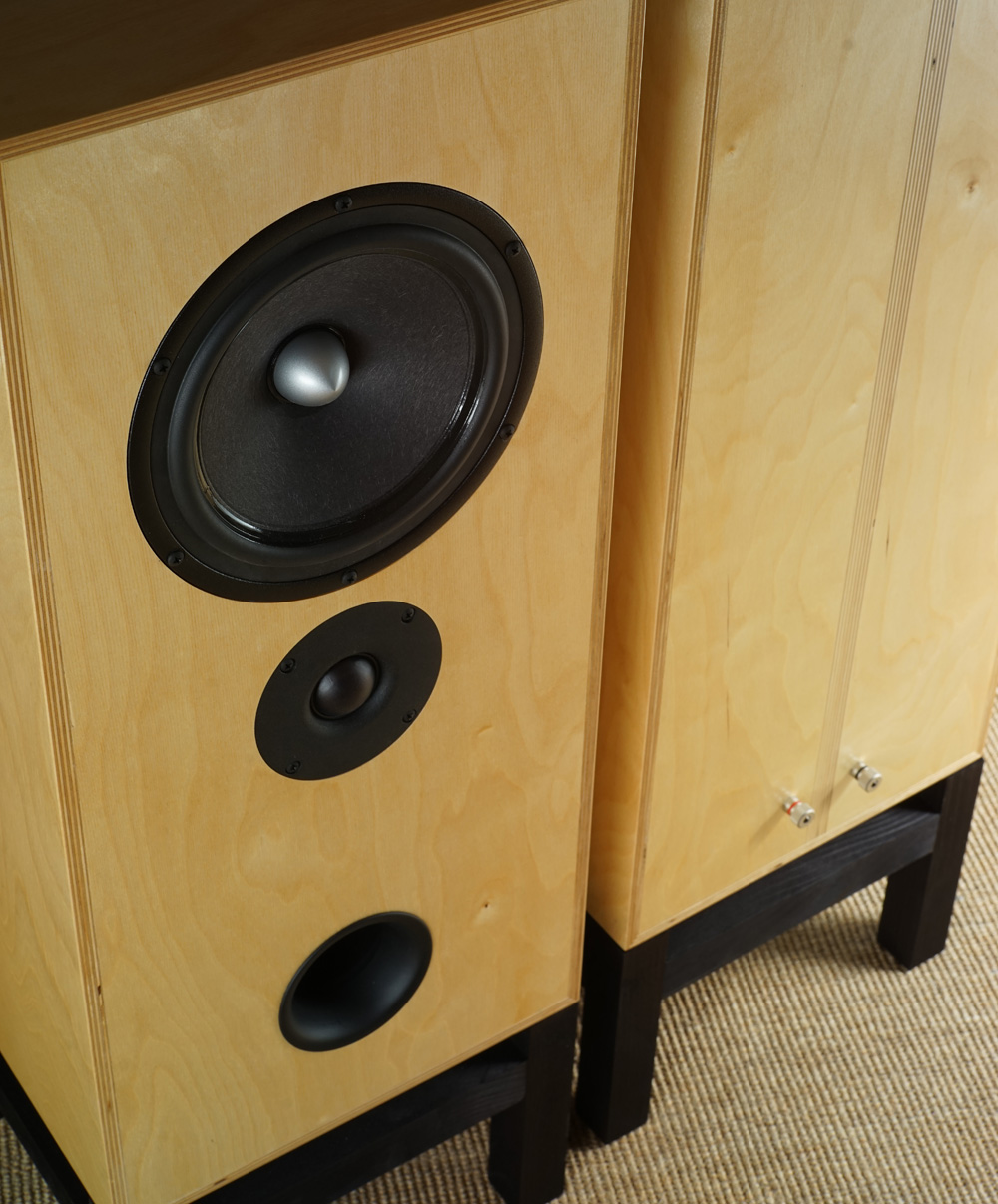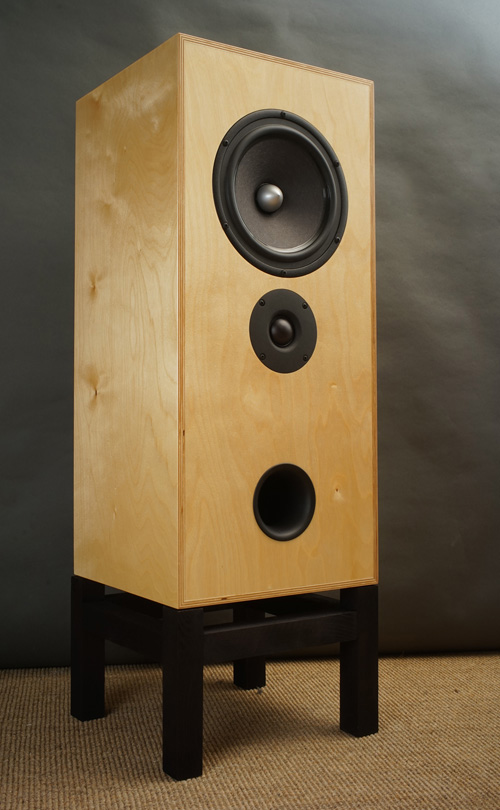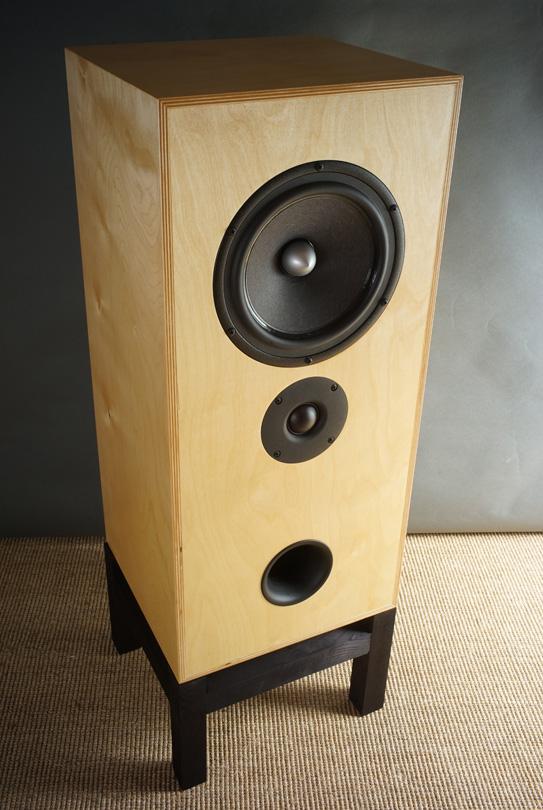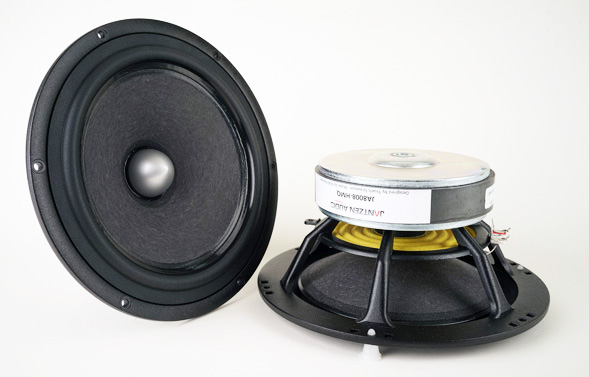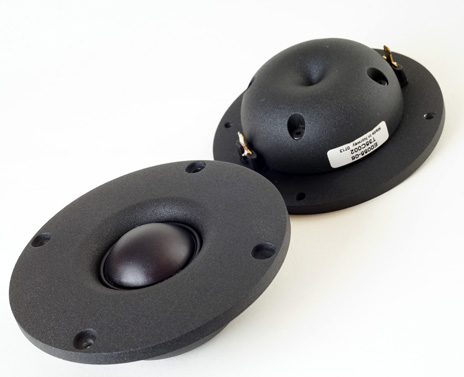DIY Loudspeakers: HOME INDEX UPDATES RESPONSE WHAT'S NEW
8008-CORNER
Copyright 2016-21 © Troels Gravesen
Go to on this page:
DRIVERS
CROSSOVER
CABINET
MEASUREMENTS
SPEAKER-KIT
CROSSOVER LAYOUT
SOUND AND SET-UP
Simplicity is the key word for this speaker. Simple as can be cabinet
and a simple as can be crossover consisting of four components. It also
requires a simple set-up as the bass response is relying on room
reinforcement - room-gain. Some people think less is more -
but I disagree. Most speaker drivers are so imperfect that more is
better, helping eliminating all the bad stuff that imperfect drivers or
designs do. But here
we have two drivers that on a suitable baffle performs so well we can
get away with less, so if you think less is more, this may be for you.
Going through my LspCAD files I rediscovered this simple set-up made
some years ago when the SEAS T35C002 tweeter emerged. Placing speakers
in corners have its price, but a lot of people - for various reason -
have to settle with a pair of boxes togged away up against walls or even
up against corners. There are two key issues when we place a speaker
against a wall or close to corners. One is room-gain (use google), which
can be considerable for corner placement. If you place a bass driver in
a corner close to the floor, side wall and front wall, you theoretically
have 9 dB extra in the bass - and that's a lot! Next we have early
reflection in the midrange and treble and if these reflections are very
early, and we're talking milliseconds, it confuses our brain and smear our perception of depth and
perspective.
The thing is that many people have to live with this and it's really not
the whole story, because there are manufacturers taking advantage of
near-wall placement and the way the speakers better energise the room
due to room-gain. "Music-in-a-room" is another way of dealing with
reproduced music and in fact the majority of people - those who actually
have a sound system - have their speakers stuck into bookshelves or if
they have floor-standing speakers, they're stuck into corners. Pin-point
imaging is far-out for most people. Vocal recognition, decent treble and
decent bass is what matters. Most people are "low-tech listeners" (Stereophile,
Sept 2016, p 15) who listen to music as background while doing other
things.
Making a speakers for near-boundary placement takes a driver with an
appropriate low Qt in order not getting too boomy due to room-gain. If we
place our 8008-HMQ driver in a 48 litre vented cabinet with a very low
port tuning of 32 Hz we have a smooth roll-off starting already at 150
Hz, and the trick is to place the speaker so that room-gain makes a
mirror image of the roll-off and the result is a reasonably smooth
response of lower-bass. Look below at cabinet
section. But don't get too exited about a flat response down to 30 Hz,
trees don't grow to the sky, but decent bass we get - and we have some
92 dB sensitivity and impedance doesn't drop below 6.5 Ohms, thus a
speaker for tube fans - even flea-powered SET amps may be an option
here.
Basics:
2-way speaker in a 48 litre vented cabinet specifically designed for
near-wall placement.
System sensitivity: 92 dB/2.8V, 1 meter.
Impedance: 8 Ohms, minimum 6.5 Ohms @ 180 Hz.
Crossover: Low-order series LR2 filter, 1.7 kHz.
Power requirement: 10+ wpc.
Power handling:
100 watts, but please
also read this:
http://www.troelsgravesen.dk/power-handling.htm,
and remember any burned driver is a misused driver.
Download specs: Jantzen Audio JA8008-HMQ SEAS T35C002
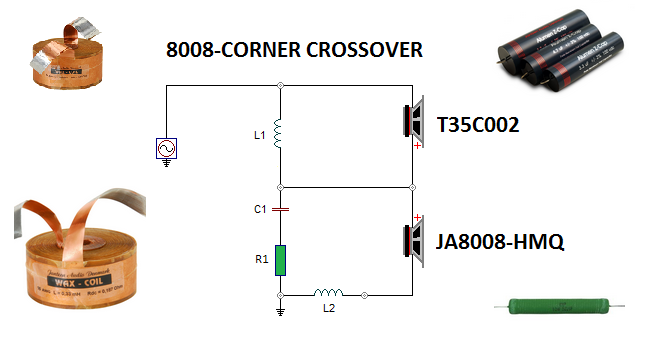
Crossover values only comes from purchase of the kit from
Jantzen Audio and cannot be bought separately.
The crossover is a very simple series crossover consisting of two coils,
one capacitor and one resistor producing a perfect 2nd order roll-off
for both drivers. That's it! As close to "a coil and a cap" as can be
without some serious compromises.
Now, getting two drivers to mate from this little is mostly a matter of
good luck. Numerous iterations have been tried, but the 8008 and the T35
tweeter is just a great match and not even the Audax TW034 goes here.
Frequency response, sensitivity, impedance and phase just has to do
right, as one driver impacts the other and visa versa. Due to the use of
a flat front panel, the 8008 must be placed on top and listening height
should be on 8008 axis to provide the best phase integration.
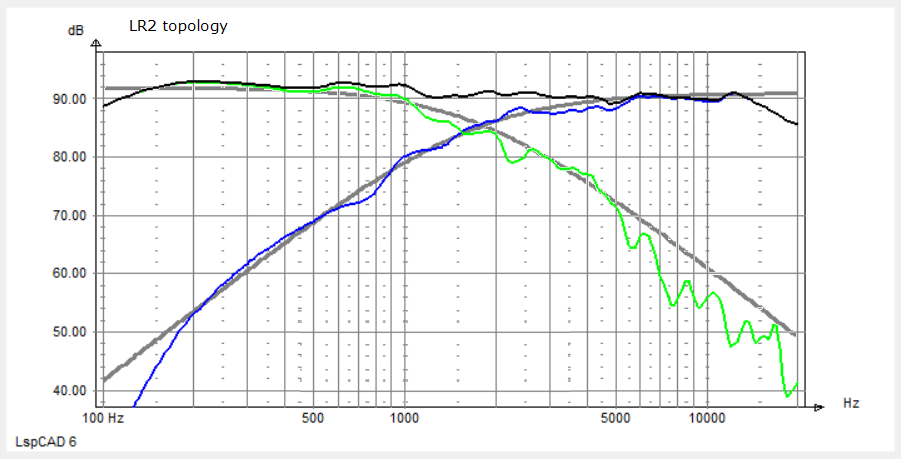
Above the target roll-off compared to actual roll-off.
As can be seen, these drivers are a perfect match for one another, the
8008 helps the T35 a little in the 2.5-5 kHz range the the T35 helps the
8008 in the 1-2 kHz range, producing an overall very flat response.
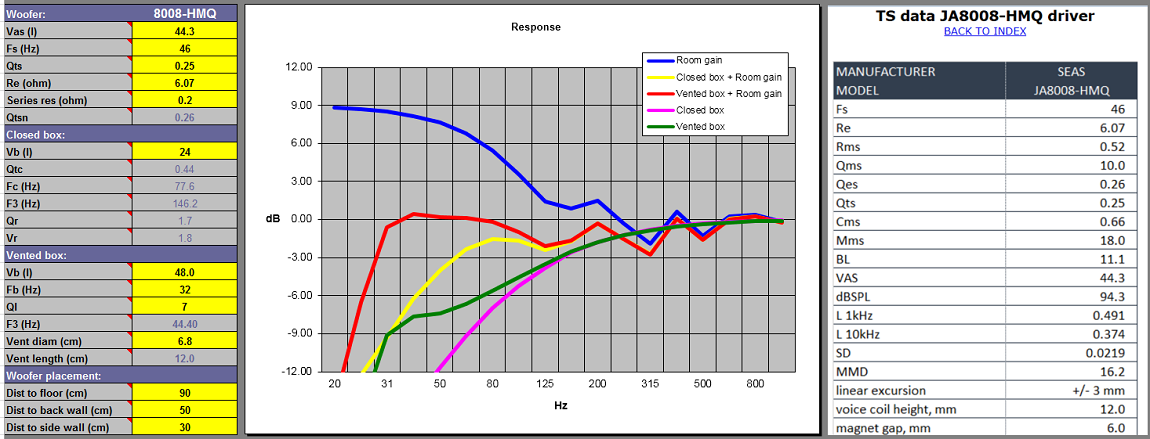
Above the modeled response of the 8008 in a 48 litre cabinet.
Green line is driver response, blue line room gain.
Combined we get the red line, but as said, don't get too excited about a
flat response to 30 Hz. Rather think 40 Hz.
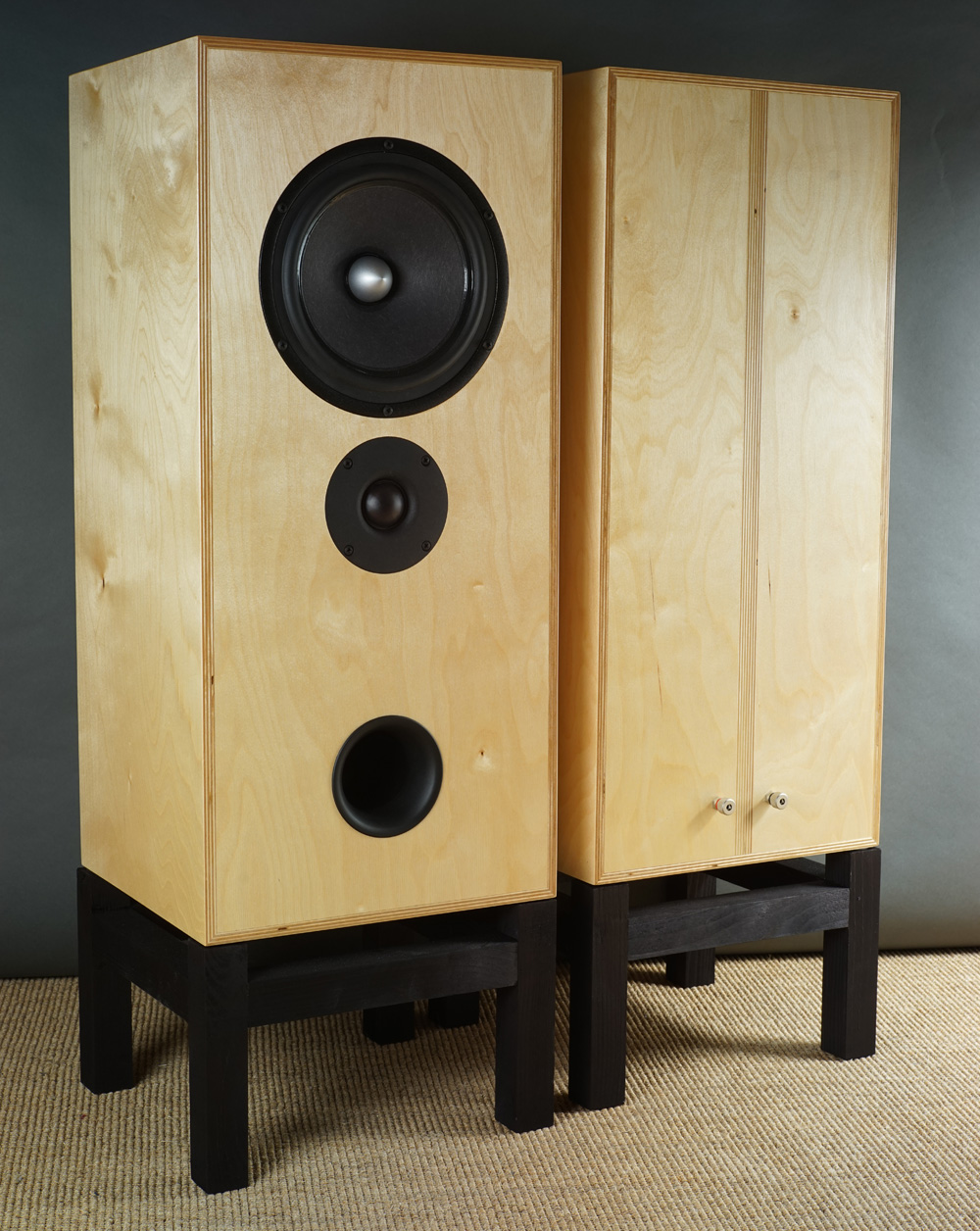
Cabinet Construction
Cabinet is simplicity itself and is made from 20 mm Baltic birch or 19
mm MDF. Two braces adds to the rigidity of the structure. Here some tips on details that
solve the bulk of questions I have:
http://www.troelsgravesen.dk/tips.htm
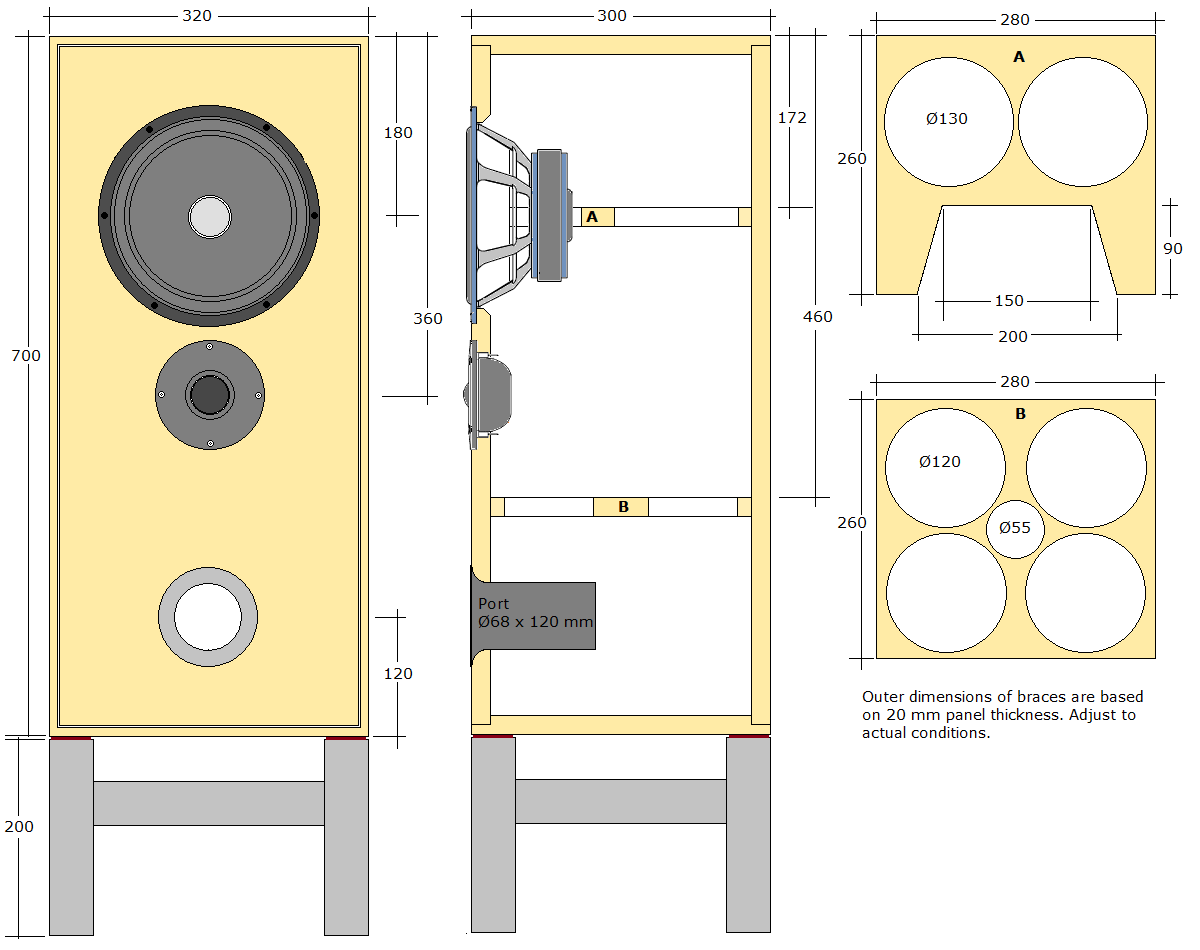
Net volume from 20 mm BB is 2.8 x 2.6 x 6.6 = 48 litres minus port, drivers and fillets.
Should you want to experiment some more, try a TQWT design like seen
here. Use a
flat front panel and place the tweeter below the JA8008-HMQ driver. No
waveguide used. Lower the 8008 driver some 50 mm to make ear height from
listening position. You may also try a TL design like one builder here
did for the QUATTRO design. Link
here.
A third options may be to build the cabinet without braces and from e.g.
15 mm Baltic birch or similar and make a "thin-walled" cabinet, e.g.
Spendor/Harbeth style. What you get is a resonant box and it has its
followers. Not my cup of tea to have the cabinet adding to the overall sound. If you do so, please report back and tell me
what you hear. There are all sorts of unsubstantiated claims in hifi and
to my knowledge nobody has ever build the same pair of speakers in two
versions, resonant and non-resonant, and made comparison.
The 20 cm stools shown here are just about too small for my living room,
need another 5 cm to get 8008 at ear height. Find out before making
them.
Some people ask for cutting plans, and I'm hesitant to make any, as
panel thickness will vary from batch to batch and whatever material you have to
use. My Baltic birch varies approx. from 20.2-20.6 mm, hence (brace)
dimensions have to be adjusted.
Construction pics
Further details on how to make a simple rectangular box can be found in
QUATTRO file.
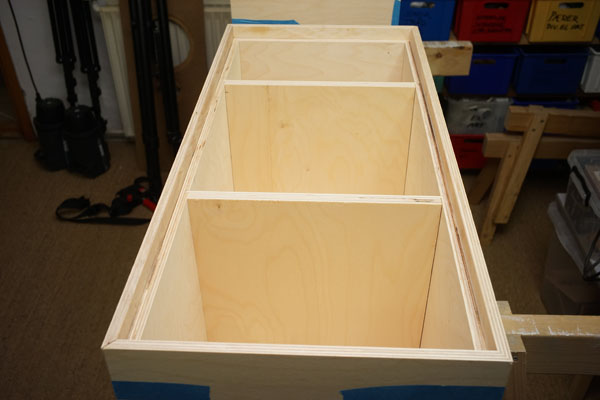
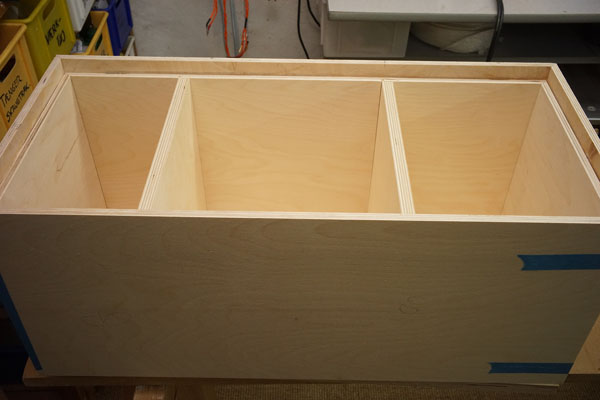
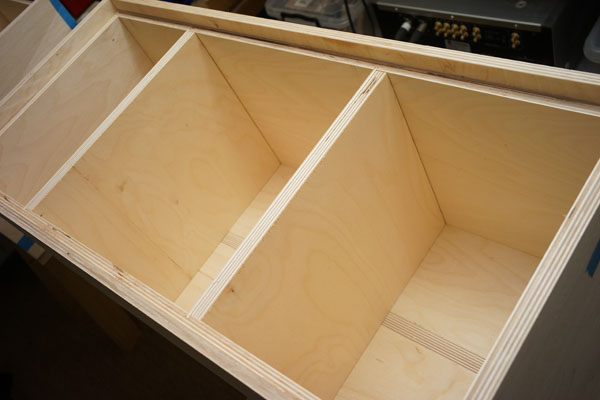
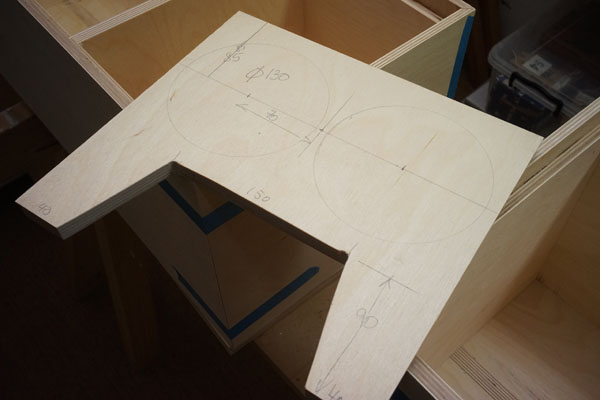
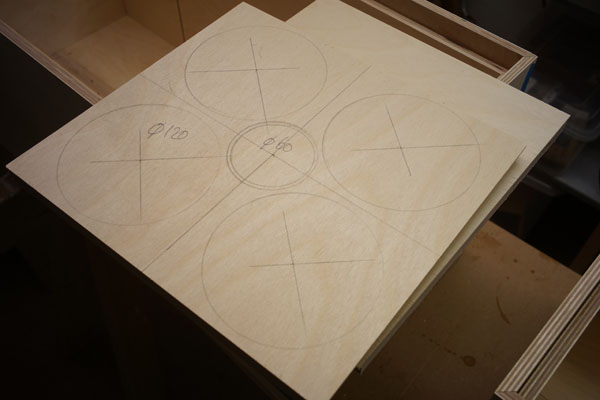
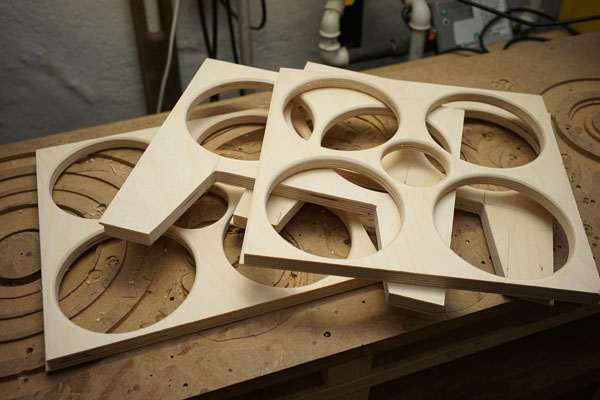
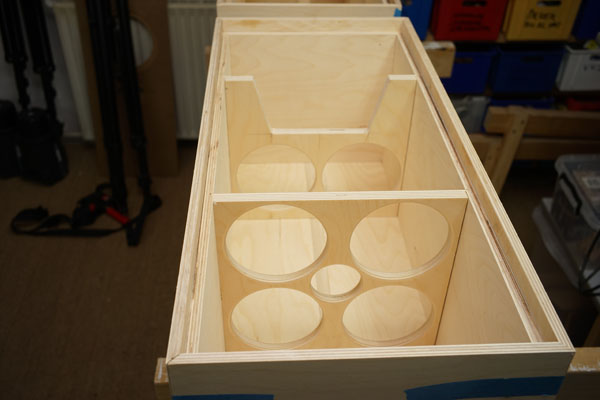
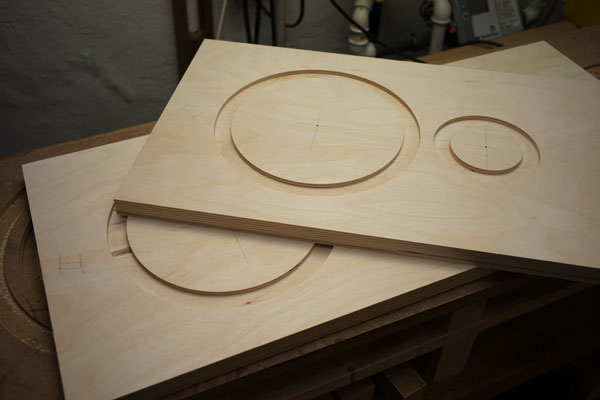
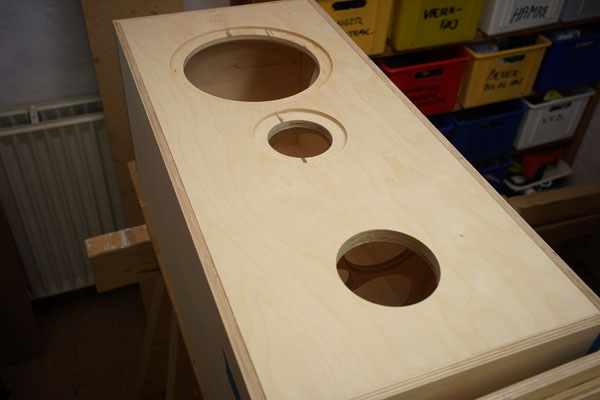
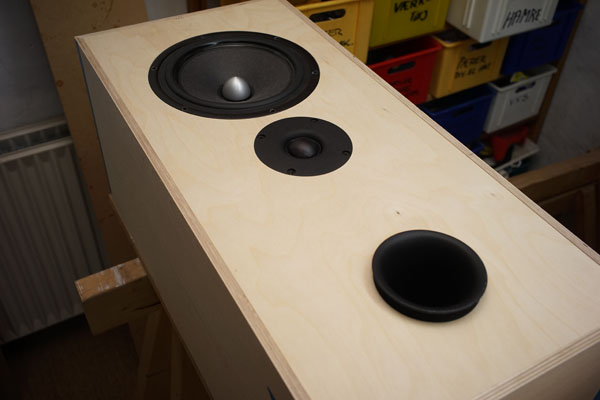
Cabinet damping
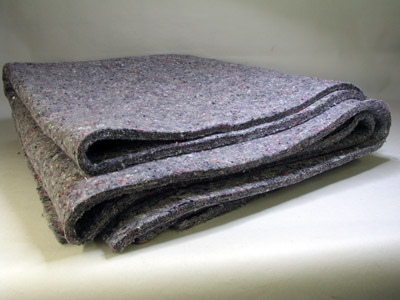
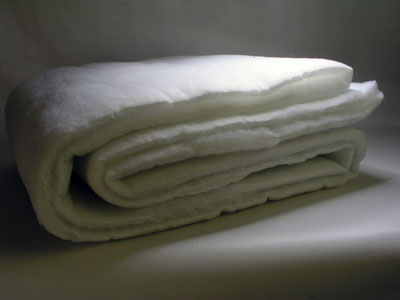
Add felt to all internal panels except front panel and below crossover.
Add two layers of acoustilux at bottom, one layer at top, one layer
above crossover and two layers at top on rear panel.
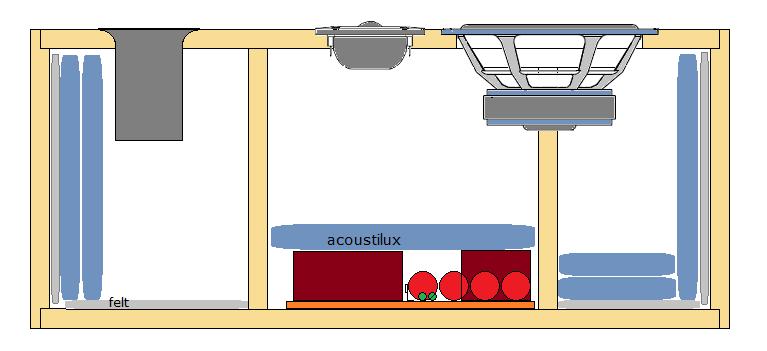
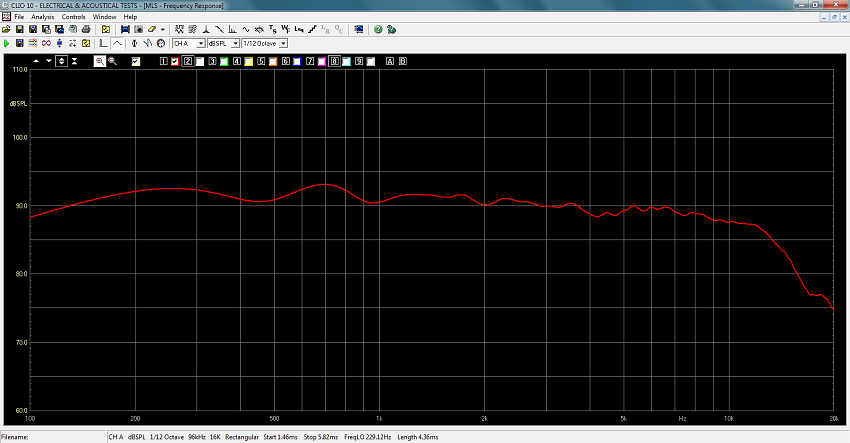
Frequency response of system at center of 8008 unit.
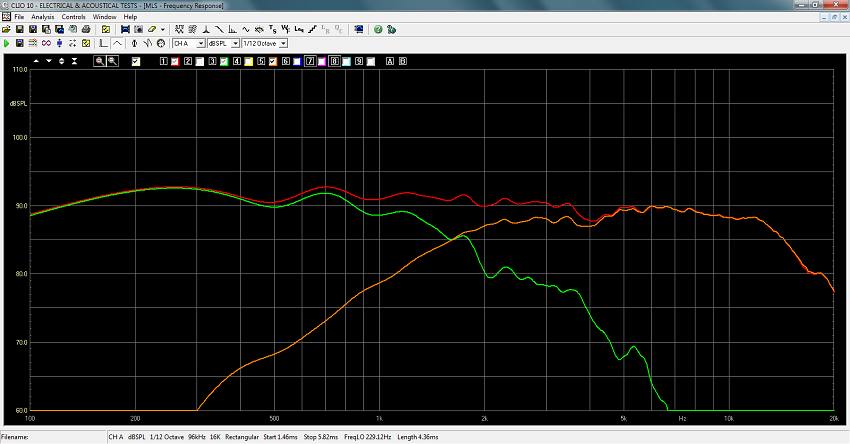
Frequency response of drivers driven from crossover and summed response.
Point of crossover around 1600 Hz.
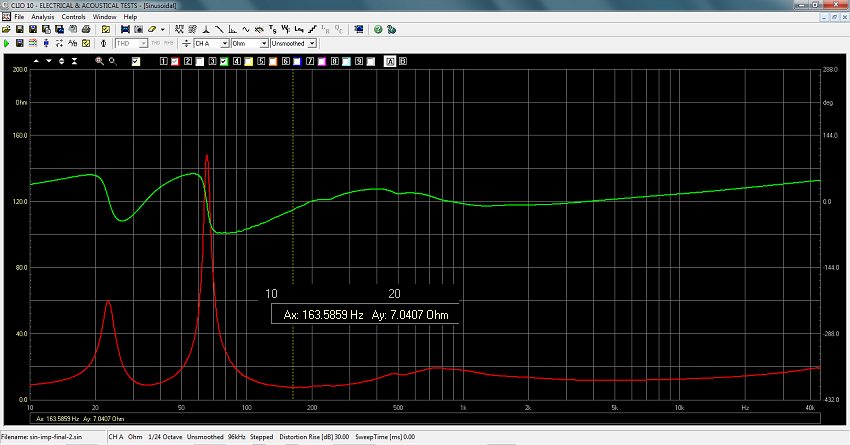
Above impedance measurement (red) and electrical phase (green).
Dotted line displays minimum impedance at 163 Hz = 7.04 Ohm. Values for
tube lovers!
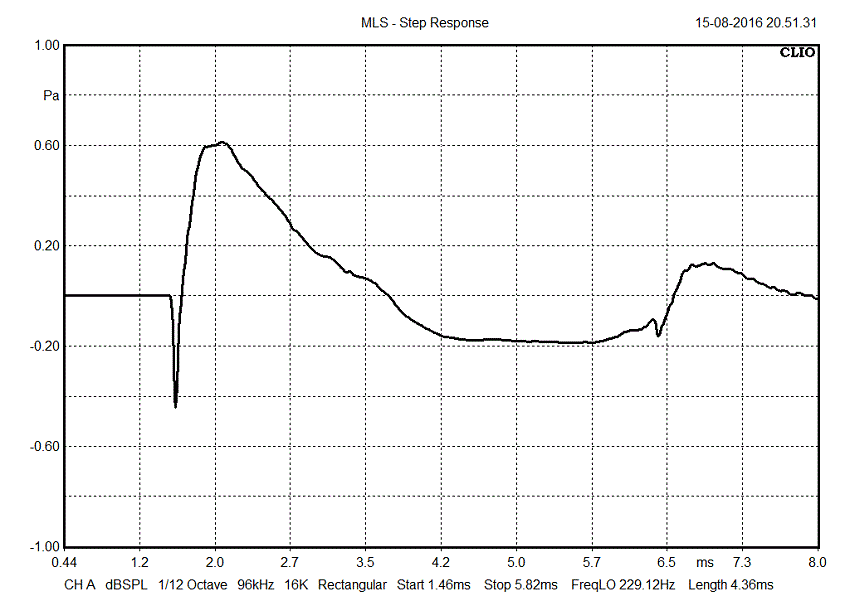
System step-response displaying tweeter connected with inverted
polarity.
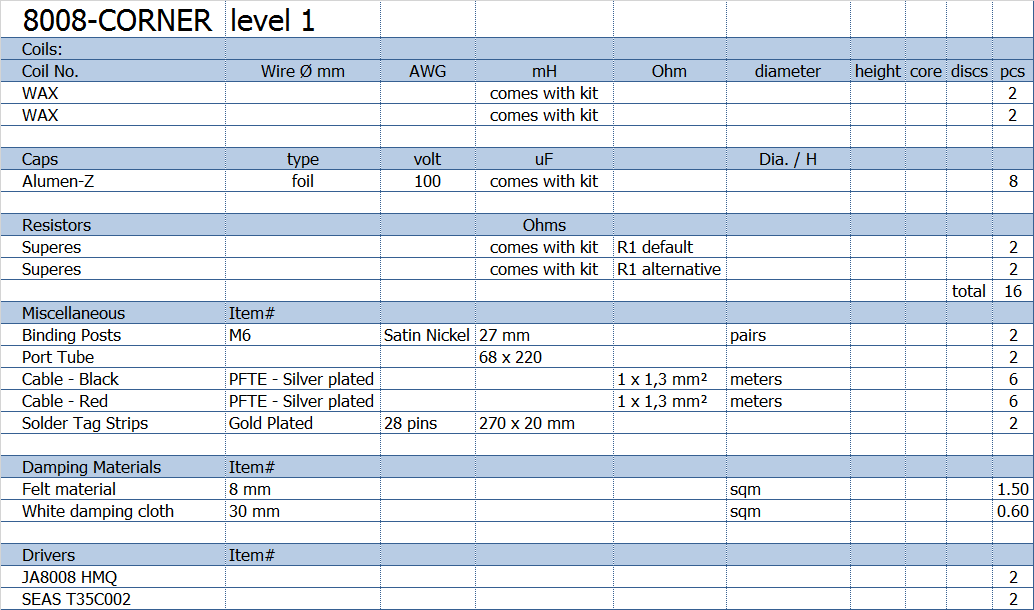
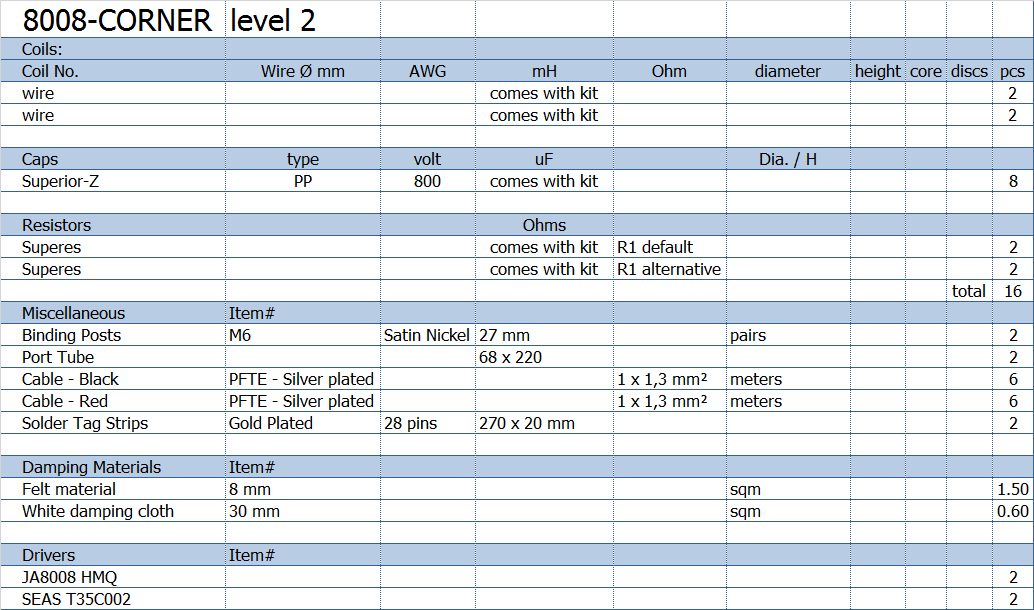
All kit and component prices may be subject to change and are always to be confirmed by Jantzen Audio Denmark.
Download Kit
Sale Presentations:

All technical questions to troels.gravesen@hotmail.com
All questions regarding purchase of kits, please mail Jantzen Audio at contact@jantzen-audio.com
CROSSOVER-LAYOUT
BACK TO INDEX
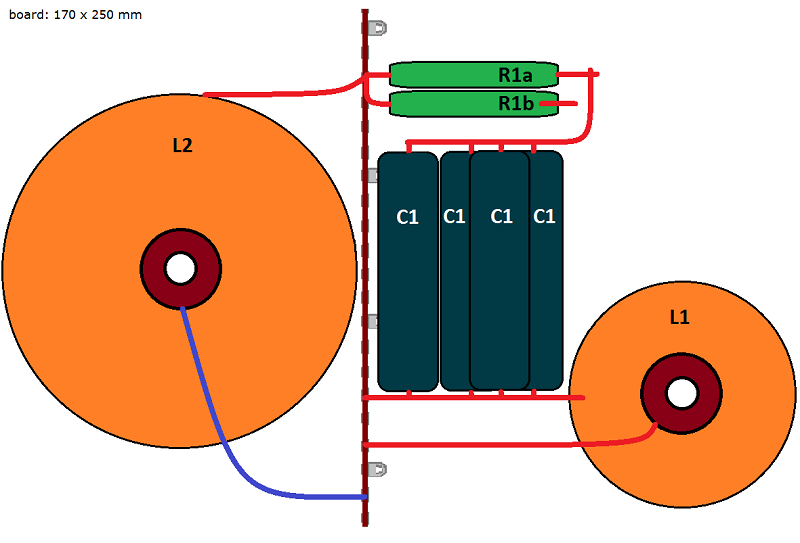
Level 1.
Click image to view large.
Components' values come with the kit incl. Kit Instruction.
Connect either R1a or R1b to L1.
R1a is default. If you're a sucker for treble, connect R1b.
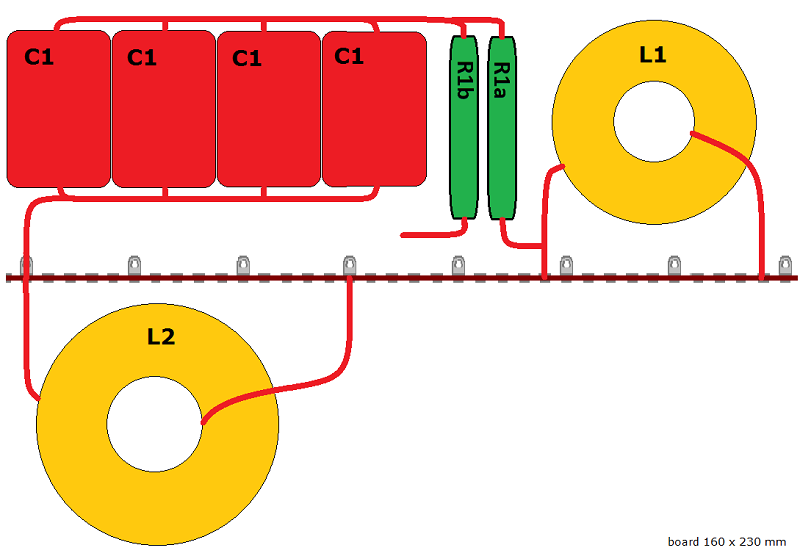
Level 2, click image to view large.
Connect either R1a or R1b to L1.
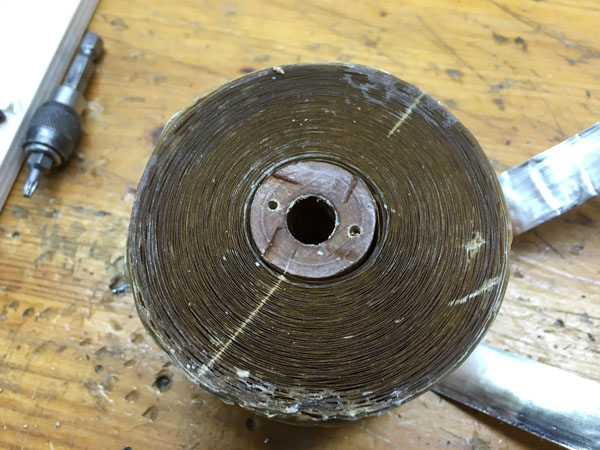
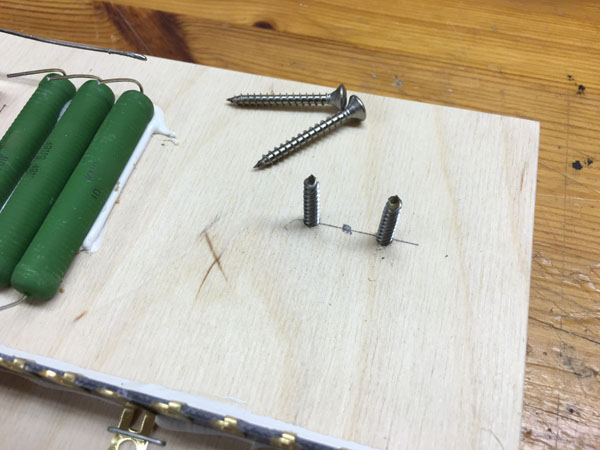
The bass coil is a chunky beast of more than two kilos and needs special attention to make
sure it stays in place.
I used two stainless steel screws that won't impact inductance. Use
brass or stainless steel.
Drill holes into the center wooden plug with 15 mm distance.
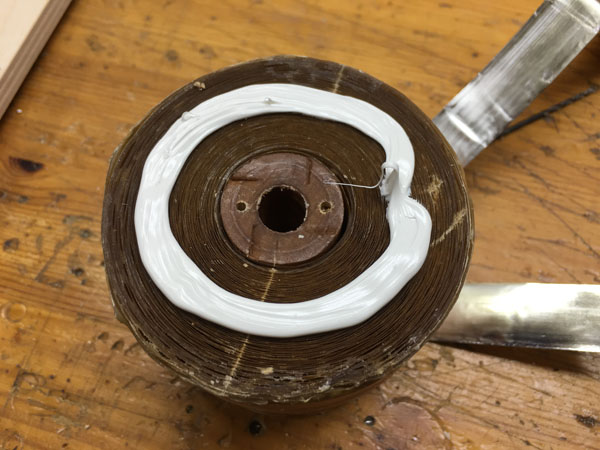
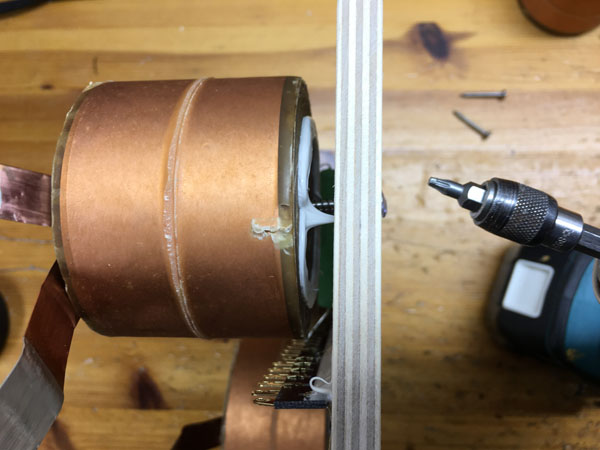
Add a ring of glue to make sure the coils do not vibrate on the
crossover board.
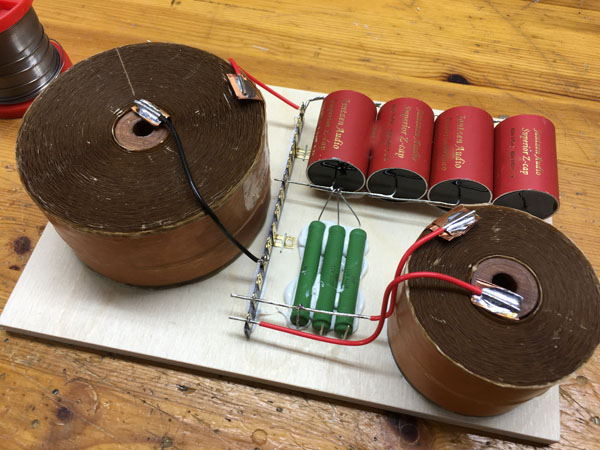
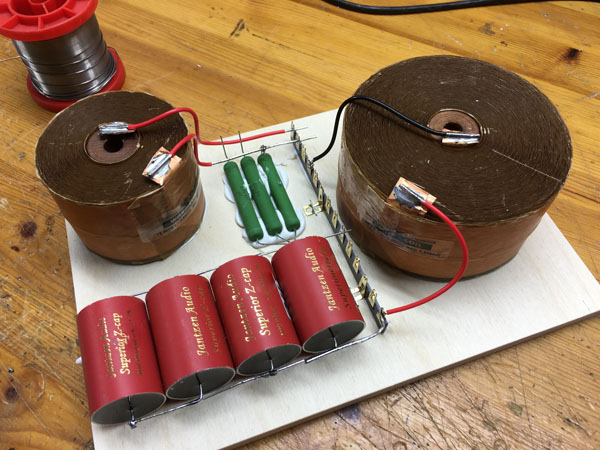
Above and below the finished crossover, actually a hybrid between level
1 and level 2.
If you do your own layout, make sure it can pass through the 8008 front panel hole!! 17 cm width is OK.
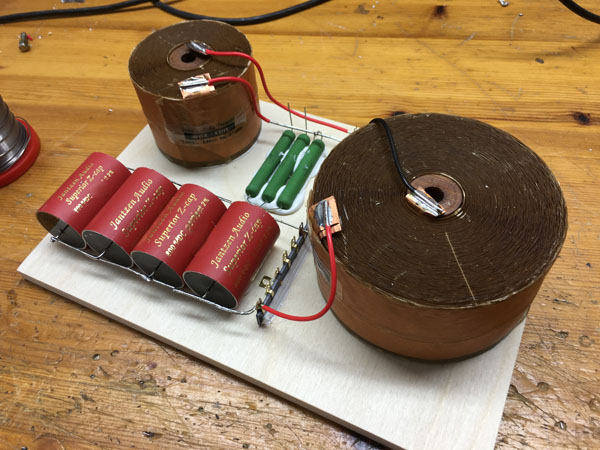
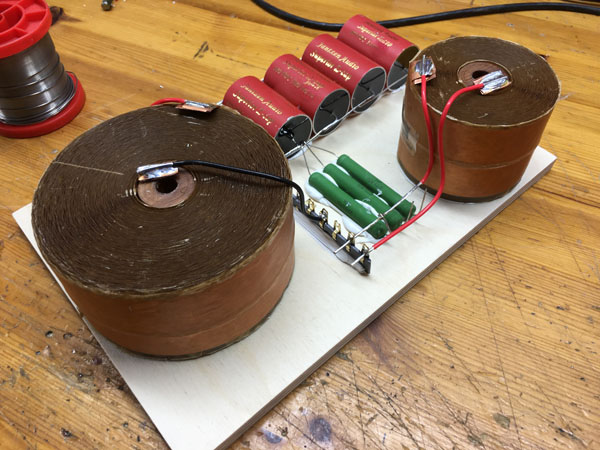
SPEAKER WIRING

Series crossovers are notoriously tricky when it comes to wiring, so here is shown wiring for both versions.
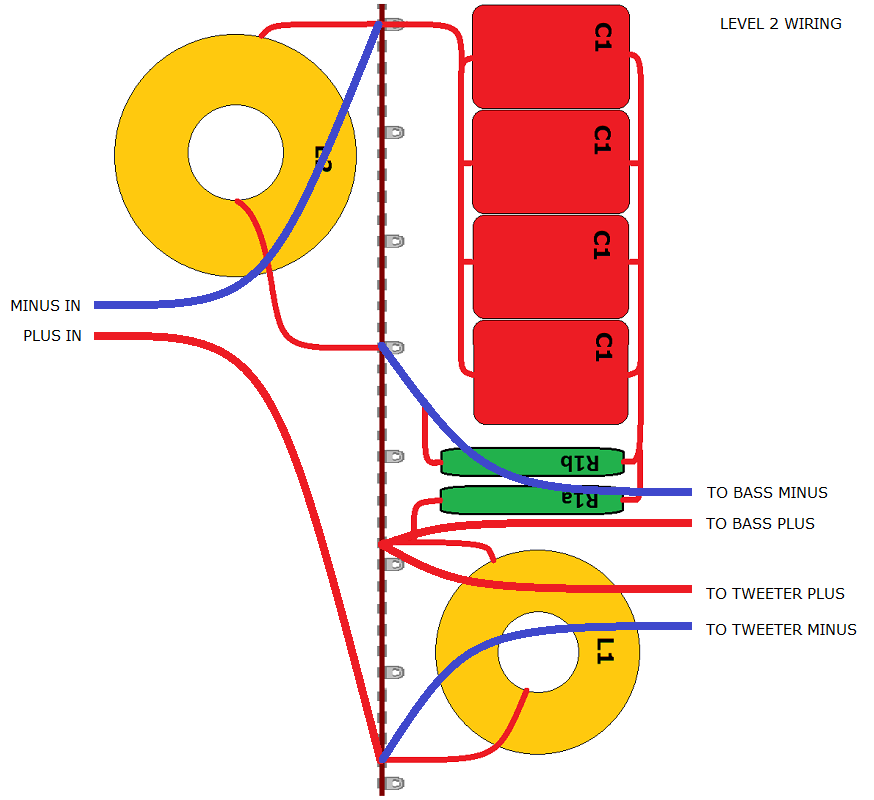
SOUND AND SET-UP
BACK TO INDEX
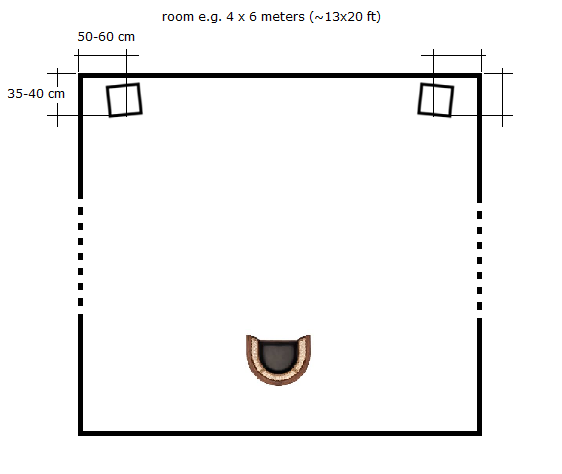
Now, I can't tell you what a speaker sounds like as little as I can tell
you the taste of peanut butter. You have to hear/taste yourself to know
what it's like.
These speakers kind of make your room your friend rather than the usual
acoustic enemy because they are designed to use the room actively for
enhancement of the lowest bass. To be honest I have been a little more
than surprised to hear how they perform in different rooms. Where was
the "serious" loss of perspective? The lack of sense of depth? It seems
all there, only with the recording room behind the front wall. They make
it easy to listen to music because they involve the room in a way I'm
not used to. The use of the 8" driver to handle all of the midrange
seems a good choice due to its dispersion characteristic with little
apparent side wall reflection, which may count for minimum loss of
perspective.
I initially set up the speakers with a decent receiver delivering a
pleasant sound from my 24 bit library. After some time I wheeled my
GlowMaster in place driven by the WOT line-stage and whauuu... things
improved.
The 8008 CORNER delivers a solid bass - when there is some
bass! These speakers perform a little like the TQWT speakers, strong
midrange projection and featherlike bass. No boomy bass here.
Treble is strong and clear from the magnificent T35 tweeters.
The placement suggestion seen above delivers the strongest bass. If you
pull out the speakers a little from the front wall and closer to the
wall, perspective changes somewhat with a little less bass and more
depth. Try it out and hear what suits your room and taste the most.

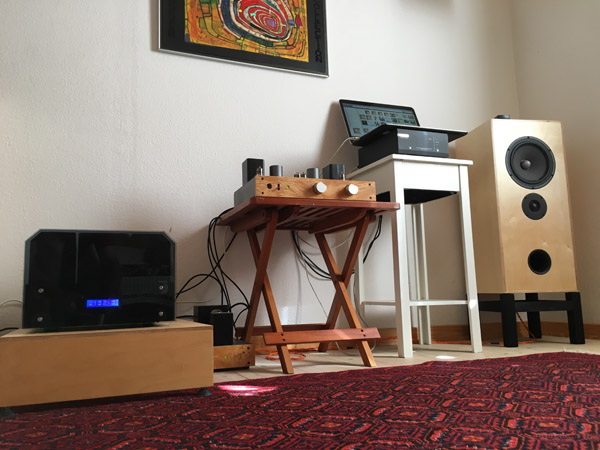
Above in a 12 sqm rectangular room (3 x 4
x 2.4 meters).
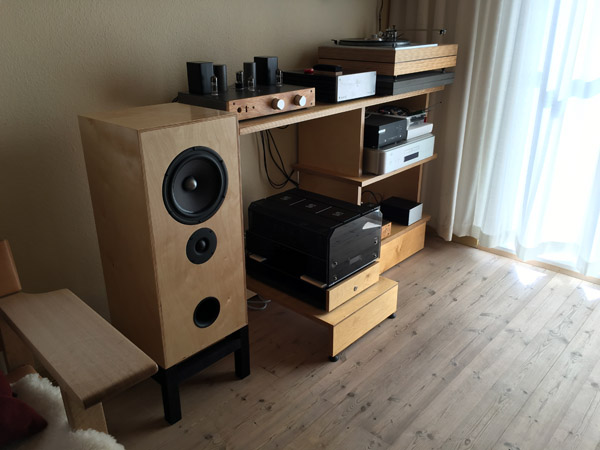
Even in our living room (4 x 6 meters) up against the front wall and far
from side walls, the 8008-CORNERS do well.
Not as much bass as from corner placement, but adequate for most genres.
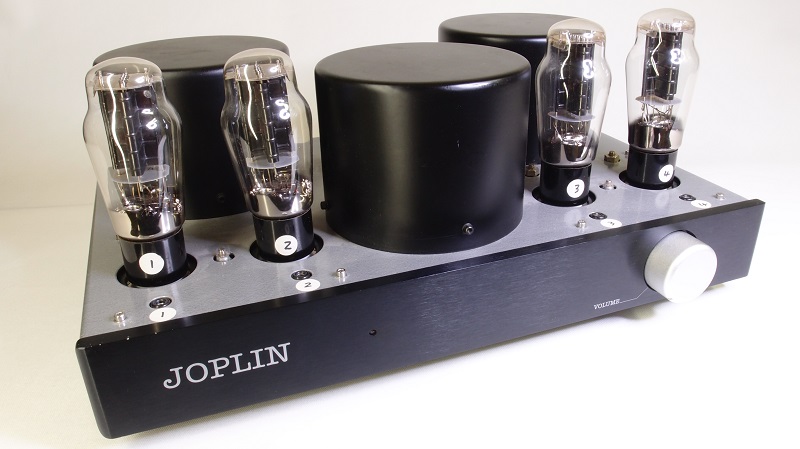
This Joplin 2A3 amp, ~8 watts PP, was an absolute blast with the
8008-CORNER!
A very good match indeed.
A Pass Lab First Watt J2 did very well too, better bass but not quite
the spaciousness of the 2A3.
